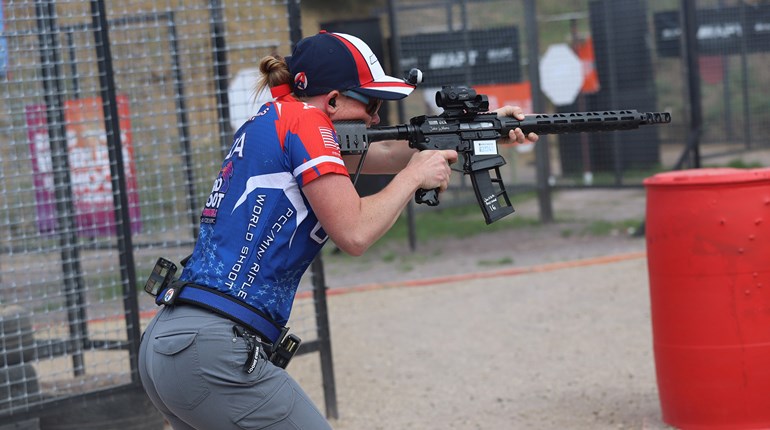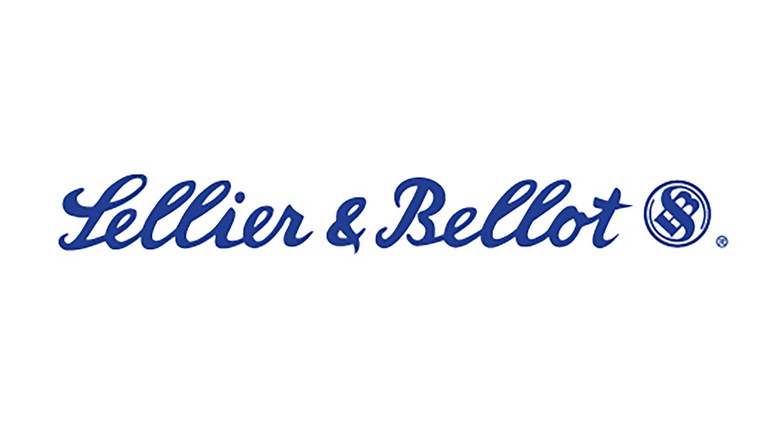
In July, I spent the better part of two weeks crisscrossing Western Europe, visiting nearly a dozen countries. Sounds like fun, doesn’t it? Sipping cappuccino on the Champs Elysees, tossing coins into the Trevi Fountain, taking selfies of me propping up the Leaning Tower of Pisa—that’s the trip of a lifetime!
Yeah, well … first of all, that’s not my idea of a vacation. My “trip of a lifetime” would be a month to putter around my farm in West Virginia with a massive power outage so nobody could call me.
Take a trip to Europe with me, and we’ll troll through dirty tent cities populated by drug addicts and vagrants. We’ll seek out “no-go” zones in Paris and visit every gun store we can find, which isn’t many. There’s also that tiny village I found in northern Italy that mined the ore that made the swords of Roman gladiators and now produces a substantial percentage of the world’s small arms. Now we’re talking.
My itinerary for this trip included WWII concentration camps, raucous street protests and a somber memorial for the victims of one of the worst terror attacks in modern European history. I tried to leave the touristy stuff to the approximately 4 gazillion travelers who also decided July would be a good month to visit.
OK, I’ll admit I ate gelato in Rome and went parasailing in the Swiss Alps. A guy deserves a break now and then, especially on a 5,000-kilometer blitzkrieg tour where I’m the only driver. So sue me.
There’s a lot happening across the European continent these days, and not all of it is bad. The political landscape is changing fast, owing to a wave of populist sentiment increasing almost everywhere. Perhaps some of it can be attributed to the president of the United States, and European voters deciding their entrenched bureaucrats could use a shakeup of their own. Whatever it is, I wanted to talk to average people across Europe to see what they think of it all.
Here’s the short version. In 12 days I visited Germany, Belgium, Luxembourg, France, Monaco, Italy, the Vatican, San Marino, Switzerland, Liechtenstein and Austria. Everywhere I went, I interviewed people about the state of things in Europe, and I was truly shocked by one thing in particular—the number of people who told me they envy America for its Second Amendment.
I’m not making that up. Ask yourself this question: How much do you know about the details of the founding documents of any country in Europe? If you are like me, it’s not much. So that makes it even more remarkable that many people in Europe are familiar with one very important detail about the U.S. Constitution—our Second Amendment freedom to keep and bear arms.
Even more surprising was the number of people who expressed a wish that they, too, could be given the right to defend themselves and their families. And in several European countries, gun-rights measures are being actively addressed.
After some 78 attempted terror attacks between October 2013 and March 2018, France is at least considering arming all municipal officers—the first line of defense for citizens. A recent survey in Italy showed that Italians in favor of looser laws on self-defense jumped from 26 percent in 2016 to 39 percent this year. And last year, the Czech Republic parliament altered that country’s constitution to give citizens a right to use firearms during terror attacks.
“We don’t want to disarm our citizens at a time when the security situation in Europe is getting worse,” Interior Minister Milan Chovanec told parliament at the time. “Show me a single terrorist attack in Europe perpetrated using a legally owned weapon.”
Most countries in Europe place harsh limits on their citizens’ options for self-defense. In many countries, average citizens are limited to less-lethal defense, such as pepper spray—or worse, cap guns. In England, as we’ve seen lately, there is a push to ban all pointy things and even limit the purchase of common bathroom cleaners.
The vast majority of Europeans have a very skewed idea of life in the United States, much like the average American might have a skewed idea of life in, say, Colombia. All they know is what they hear on the news. And all they hear on the news are the bad things that happen.
But even with a misguided understanding of America as much more violent than it is, many Europeans wish they could be more like us—better able to protect themselves from rising violent crime, sexual assault and even terror, all of which characterize the news about Europe that we often see in the United States. Such attacks have become common enough to have largely dropped off the pages of “mainstream” U.S. publications. But they still make news in Europe.
I’m talking about the stabbings, the ramming attacks, the riots, the no-go zones. Europeans are tired of it all.
Many of those who were once gung-ho about the economic progress offered by the eu are now fraught with the bitter aftertaste of unintended consequences.
Rumbles of discontent emanating from outlying reaches of the empire are now impossible to ignore, threatening to topple what was supposed to be a socially engineered utopia. The combination of hundreds of thousands of displaced people from the Syrian civil war and the lack of meaningful borders in Europe has resulted in a massive influx of immigrants making their way to the old continent in recent years. And the overburdened taxpayers, however charitable they might have once felt toward their fellow man, are starting to feel much less so. Not only that, but the millions of migrants have arrived in such numbers that they feel no desire to integrate into traditional European culture at all. And those who arrive from cultures steeped in violence often resort to violence when European culture offends their sensibilities.

The effects are evident everywhere across the continent. Sprawling tent camps populate unused land near freeway underpasses, packs of young men spend their days occupying the city parks, and an absolute explosion of graffiti seems to be consuming centuries-old buildings from the ground up.
It’s hard to overstate that last point. The sheer amount of graffiti covering what were once beautiful, tree-lined avenues in Paris, Rome, Munich and elsewhere is absolutely appalling. I will never understand what possesses people to ruin their own neighborhoods like that. What’s worse, they are ruining places that were once priceless cultural landmarks.
After some 78 attempted terror attacks between October 2013 and March 2018, France is at least considering arming all municipal officers—the first line of defense for citizens.
But those are just the visible signs of the changes taking place. More concerning is the rise in property crime, sexual assault and violence, to say nothing of the high-profile bombings, stabbings and ramming attacks that have plagued most countries that have welcomed these migrants. These actions are what really began to strangle Europe’s collective good will.
The result: Politics across Europe are taking a decided lurch to the right. Italy’s new deputy prime minister, Matteo Salvini, has taken a much tougher stance on immigration, standing up for Italians first and denying some migrant boats entry into Italian ports. For this he’s been labeled a “far-right extremist” by liberal press outlets around the world. He’s also been receptive to calls for allowing citizens to more easily obtain a firearm for self-defense, which really sends the leftist media types into orbit. Italian citizens who have suffered from wave upon crushing wave of immigrants, however, are liking his positions more and more.
To find out what Italian gun laws are like, I had dinner with the Italian YouTube star who goes by the handle Instructor Zero. We met at a sprawling villa in the Italian countryside (he asked that I not share the exact location) and shared a wonderful meal that he cooked himself. Over lots of wine and good food, we discussed the state of Italian gun laws.
“Italy has some of the better firearm laws in Europe,” he said. “But our laws are very old. I can carry a gun or a stick with a 20-centimeter blade, because those were in common use at the beginning of the 20th century. But I can’t carry a Taser or less-lethal weapons. And terrorism has completely changed the game. They are only going after soft targets, and there are far too many soft targets in Italy. There’s no way for law enforcement to cover them all. Our only option is to give rights to honest people, because we need to be the first responders.”
We also discussed the influence of the EU on gun regulations. He pointed out what we’ve known for years—that EU bureaucrats have a dramatically different vision for Europe than the common man does.
“Right after the first terror attack in France, the EU started to push for the ban of most of the firearms in the legal market,” he said. “They like to say, ‘You don’t need firearms; we have police.’ But that’s like saying you don’t need fire extinguishers because we have firefighters.”
He continued: “Every time I go to the United States, I can almost smell the freedom you have in your country. And the Second Amendment is a rock of that freedom. I always tell people to learn from us, watch what is happening in Europe, and never let that happen in America.”
The tiny town of Borgosesia sits nestled in the forested foothills of the Italian Alps, a couple hours from Milan by car. It’s not a place that gets many tourists, though it probably would if it didn’t have to compete with places like Venice, Cinque Terre and Pisa. Well-kept stone buildings, many of which were constructed at least half a millennium ago, make up the city center. Everyone knows each other, and there is normally very little crime.
But even here, people are worried. Crime in Italy’s cities keeps rising, and the unemployment rate is high and getting higher. An untold number of migrants have entered Europe in the last few years by way of Italian shores. At first Italians were happy to help, finding shelter and sustenance for as many as wanted to stay. They assisted the rest on their journey north.
Two years ago, Gianluca Buonanno, the mayor of Borgosesia, floated a novel idea to help the citizens of his town more easily acquire a gun for self-defense by subsidizing the purchase of the firearms out of their own municipal taxes. The plan was to hand out vouchers for 250 euros, which could be redeemed against the legal purchase of a firearm. Unfortunately, Buonanno died suddenly before he could bring his plan to fruition. But his life and death served as a catalyst, and his sister, Emanuela, decided to take up the challenge and run for office herself. Today, she’s the vice-mayor of Borgosesia, and she says the need for personal protection is greater than ever.
“People don’t feel safe now,” she told us. “For this reason, they are starting to ask for firearm permits in greater numbers than before. But even if you get a permit, you can’t take [your gun] around town or even carry it in your car. You must keep it at home. But even then, if someone breaks into your house at night to rob you and you shoot him, you are the one who will have the problem, because they will accuse you of ‘excessive self-protection.’ We are not allowed to protect our property, our family, our kids.”
Explained like that, it’s no wonder Italians are clamoring for better self-protection laws.
These kinds of conversations followed me across Europe. I met some sport shooters in Switzerland who explained that even though Switzerland is No. 3 in the world in guns per capita, they fear that if sport shooting becomes too popular, the government could take their gun rights away. For this reason, they also wish their country had a Second Amendment.
I’ve always believed Europeans to be extremely hoplophobic (terrified of guns), judging from the draconian self-defense laws in most of those countries. I guess I’ve been swayed by the media’s portrayal of the old country as a more “progressive” place that America should emulate.
But talking with regular people, it’s clear there are many who envy our country for the freedoms so many of us take for granted. And if there is one thing they’d like us to take away from their experiences, it’s to never let so-called “progressive” incrementalism nibble away at those freedoms.
Chuck Holton is a veteran Army ranger and NRATV correspondent.


































